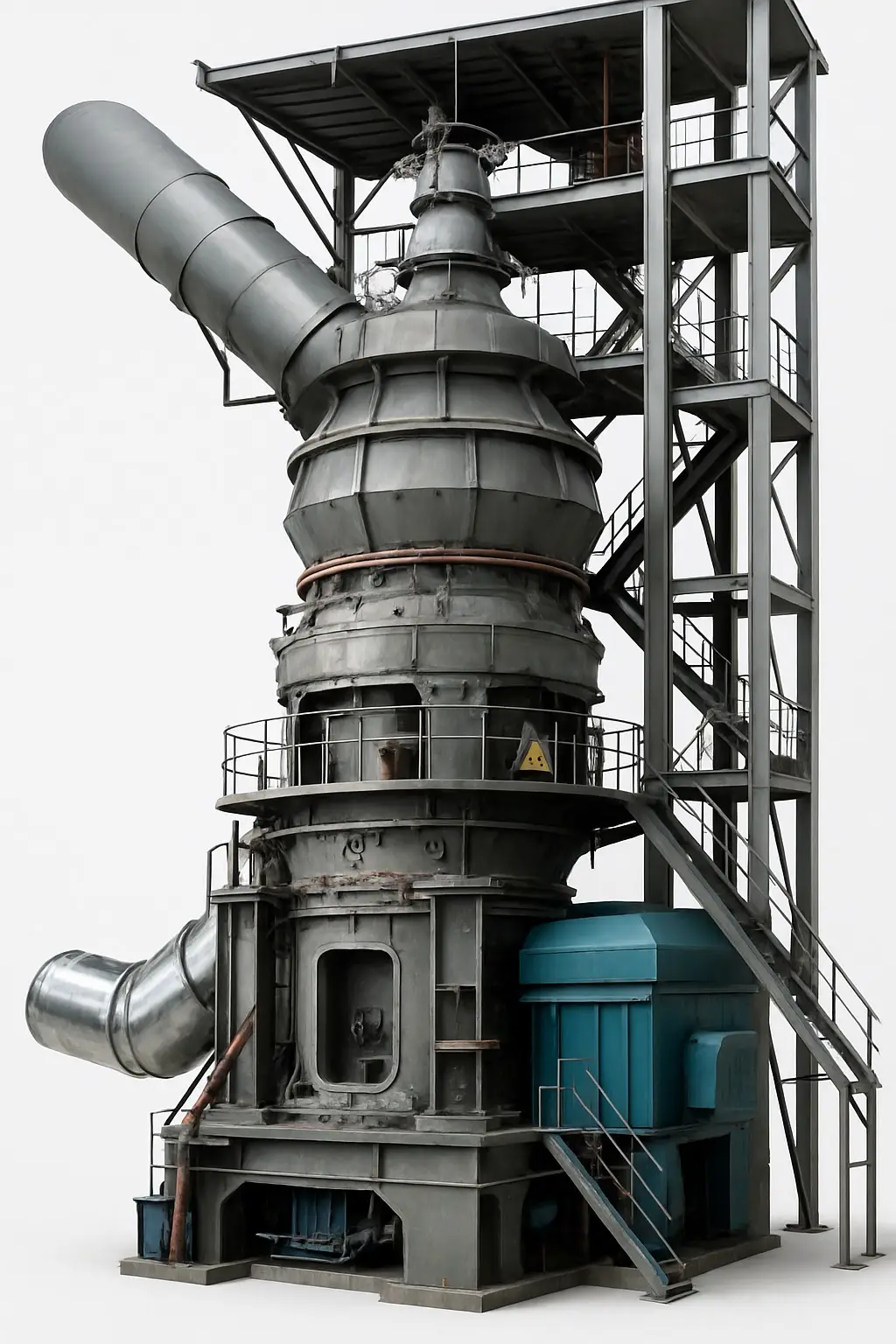Service
Vertical Cement Mill
Advanced Grinding Technology The Vertical Cement Mill is a cutting-edge cement grinding machine designed for processing materials such as feldspar, calcite, talc, barite, fluorite, rare earth, bentonite, marble, limestone, bauxite, manganese ore, phosphate ore, ferric oxide, quartz sand, cement clinker, activated carbon, clay, coal gangue, gypsum, silicon carbide, and slag. This versatile mill is a staple in industries like cement, power, metallurgy, and chemical processing.

Vertical Cement Mill
Structure and Functionality
The vertical cement mill integrates crushing, drying, grinding, grading, and transportation into a cohesive system. Its components include the separator rotation system, roller device, transmission system, and several sealing and regulating devices. These elements work together to transform bulk or granular materials into fine powder.
Key Applications
Vertical cement mills perform essential functions, such as raw meal grinding, cement grinding, crushing operations, and drying operations. They are particularly suited for non-flammable and non-explosive mineral materials with a Mohs hardness below grade 8 and humidity under 10%.
Features of Vertical Cement Mills
Vertical mills offer several advantages:
Efficient Drying and Grinding: Capable of handling materials with up to 10% moisture, these mills streamline processing with a compact structure that requires 70% less floor space than ball mills.
Energy Saving: They consume 20%-30% less energy than ball mills and can save up to 40% in energy consumption.
Low Noise and Clean Operation: Operating with 20-25dB less noise, vertical mills feature an enclosed system that works under negative pressure, creating a dust-free environment.
Automatic Control: With features like long-distance control and easy maintenance, changing roller shells and liners is hassle-free.
Working Principle
The motor drives the rotating grinding disc through a reducer. Material enters from the center of the disc, with hot air introduced through an air inlet. Centrifugal force moves the material to the disc edge, where it is crushed by grinding rollers. The high-speed airflow lifts the powdered material, separating coarse particles to be reground. Fine powder is collected in dust collecting devices, while contacts with hot air dry the material to achieve desired moisture levels.
Conclusion
The vertical cement mill, with its energy-efficient design and innovative features, represents a significant advancement in grinding technology. It offers a clean, efficient, and flexible solution for industrial applications, reducing costs and enhancing productivity with support from providers like DMPCR.
